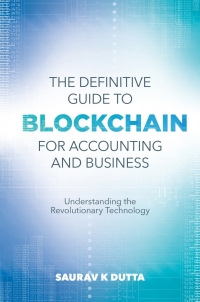Answered step by step
Verified Expert Solution
Question
1 Approved Answer
Use the Ontario Budget 2020 pdf posted in learning resources to answer the following questions Use information in Chapter 3 to answer questions a-c Take
Use the Ontario Budget 2020 pdf posted in learning resources to answer the following questions
Use information in Chapter 3 to answer questions a-c

- Take a look at the fiscal summary (table 3.1) on page 167 and discuss revenues and expenditures from 2020-21 to 2022-23. Do they plan on running a deficit or surplus? What is the debt-to-GDP ratio in 2020-21?
- What are some of the risks to revenue? What are some risks to expenses? What size deficit does the government project in 2021-22?
- What is the composition of revenue (chart 3.3)? What is the composition of expenses (chart 3.4)? List the governments 3 largest sources of revenue. List the governments 3 largest expenditures.
Use information in Chapter 4 to answer questions d-f
- Discuss Ontarios borrowing program.
- What is the composition of 2020-21 borrowing? What is the current outlook on total long-term public borrowing amount?
- What does the government expect the cost of debt will be?
Table 3.1 Fiscal Summary ($ Billions) Current Medium-Term Outlook Actual Outlook 2019-20 2020-21 2021-22 2022-23 Revenue 156.1 151.1 152.3 160.2 Expense Programs 152.3 174.6 170.2 172.4 Interest on Debt 12.5 12.5 13.2 13.9 Total Expense 164.8 187.0 183.4 186.3 Surplus/(Deficit) Before Reserve (36.0) (31.1) (26.2). Reserve 2.5 2.0 2.0 Surplus/(Deficit) (8.7) (38.5) (33.1) (28.2) Net Debt as a Per cent of GDP 39.7 47.0 48.5 49.6 Accumulated Deficit as a Per cent of GDP 25.3 31.2 33.0 34.1 1 For the purposes of the legislated requirements for a budget and mid-year review in the Fiscal Sustainability, Transparency, and Accountability Act, 2019, the 2020-21 current outlook represents the plan year of the Budget as well as the current fiscal year of the mid-year review. Note: Numbers may not add due to rounding. Sources: Ontario Treasury Board Secretariat and Ministry of Finance. (8.7) The following sections detail the actions taken by the government since the release of the March 2020 Economic and Fiscal Update to implement its fiscal plan. Table 3.1 Fiscal Summary ($ Billions) Current Medium-Term Outlook Actual Outlook 2019-20 2020-21 2021-22 2022-23 Revenue 156.1 151.1 152.3 160.2 Expense Programs 152.3 174.6 170.2 172.4 Interest on Debt 12.5 12.5 13.2 13.9 Total Expense 164.8 187.0 183.4 186.3 Surplus/(Deficit) Before Reserve (36.0) (31.1) (26.2). Reserve 2.5 2.0 2.0 Surplus/(Deficit) (8.7) (38.5) (33.1) (28.2) Net Debt as a Per cent of GDP 39.7 47.0 48.5 49.6 Accumulated Deficit as a Per cent of GDP 25.3 31.2 33.0 34.1 1 For the purposes of the legislated requirements for a budget and mid-year review in the Fiscal Sustainability, Transparency, and Accountability Act, 2019, the 2020-21 current outlook represents the plan year of the Budget as well as the current fiscal year of the mid-year review. Note: Numbers may not add due to rounding. Sources: Ontario Treasury Board Secretariat and Ministry of Finance. (8.7) The following sections detail the actions taken by the government since the release of the March 2020 Economic and Fiscal Update to implement its fiscal plan
Step by Step Solution
There are 3 Steps involved in it
Step: 1

Get Instant Access to Expert-Tailored Solutions
See step-by-step solutions with expert insights and AI powered tools for academic success
Step: 2

Step: 3

Ace Your Homework with AI
Get the answers you need in no time with our AI-driven, step-by-step assistance
Get Started


